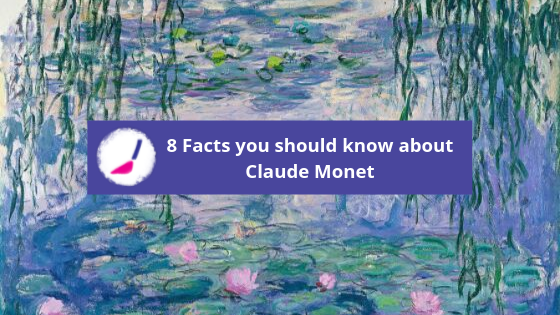[vc_row][vc_column][vc_column_text]
Claude Monet was an influential French Impressionist painter.
He was one of the founders of the ‘impressionist’ movement and focused on capturing movement, changing light and colour in his paintings and was less concerned with realism. His thin lines of colour were what characterised his work and allowed him to achieve highly atmospheric scenes.[/vc_column_text][/vc_column][/vc_row][vc_row][vc_column][vc_column_text]
1. Monet painted more than 1000 paintings

[/vc_column_text][/vc_column][/vc_row][vc_row][vc_column][vc_column_text]
2. As a boy he sold his drawings

When Monet was a child, he had a keen interest in art and drew all the time. He went on to sell his caricatures drawn in charcoal, some of which were of his teachers, when he was 15.[/vc_column_text][/vc_column][/vc_row][vc_row][vc_column][vc_column_text]
3. He served in the army

[/vc_column_text][/vc_column][/vc_row][vc_row][vc_column][vc_column_text]
4. He helped found the impressionist movement

Monet was part of the Anonymous Society of Painters, Sculptors, and Engravers which he formed along with Renoir, Paul Cézanne and others. They were all rejected from the Salon de Paris, an official exhibition. Monet wanted his paintings to be how people look at scenes rather than what is there.[/vc_column_text][/vc_column][/vc_row][vc_row][vc_column][vc_column_text]
5. Monet had problems with is vision

[/vc_column_text][/vc_column][/vc_row][vc_row][vc_column][vc_column_text]
6. His paintings of weeping willows were a tribute to fallen French soldiers in WWI

Monet painted these weeping willows at his home in Giverny in Northern France close to the battlefields. he remained there to stay with his garden and paint and by 1919 had done 10 weeping willow paintings in response to the destruction and distress of the war.[/vc_column_text][vc_column_text]
7. He often painted “en plein air”

“En plein air” translates as “in hill air” and meant that Monet painted outside in the scenes of his paintings. He was encouraged to do this by Boudin, his mentor who he met in 1857.[/vc_column_text][vc_column_text]
8. Claude Monet was also influenced by Japanese work

He discovered the Japanese printmaking ukio-e in 1872 which he liked for its innovation and the difference it made to his current work. This influence his future work and he also based his garden on Japanese design.[/vc_column_text][/vc_column][/vc_row]

